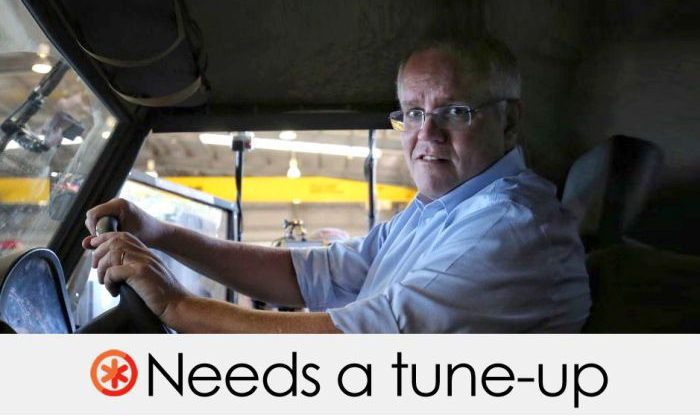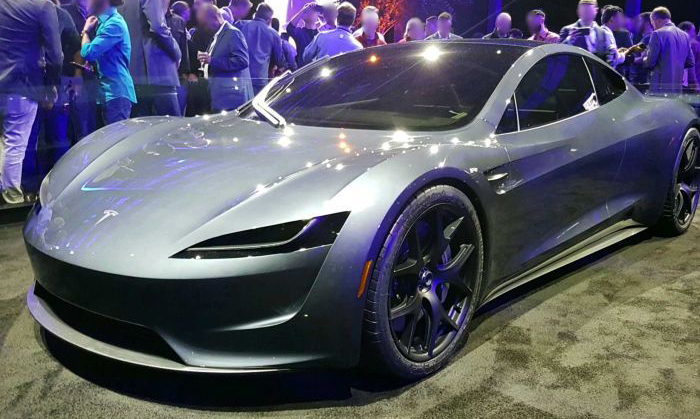Context to the claim
Labor recently announced its National Electric Vehicle policy, which aims to increase Australia's uptake of electric vehicles by setting a target of 50 per cent for new vehicle sales by 2030.
Similarly, the Government has put forward its own National Strategy for Electric Vehicles.
However, in response to Opposition Leader Bill Shorten's reference to the charge time for an electric vehicle, Mr Morrison warned against Labor's 50/50 target, saying Mr Shorten would prevent Australians from driving 4WDs and SUVs.
Referring to the price of electric vehicles, Mr Morrison said the cheapest currently available "is about $45,000 to $50,000".
"That's the cheapest car Bill Shorten wants to make available to you to buy in the future," he said.
Electric vehicles on the Australian market in 2019 and beyond
Many of the world's leading car manufacturers — General Motors, Nissan, Mitsubishi, Toyota and Hyundai — have all started manufacturing fully-electric models.
In the US, Ford recently announced it would build a fully electric version of its popular F-Series pick-up truck.
Toyota has committed to hybrid, electric and hydrogen fuel-cell variants for its entire range to be made available to markets in China, Japan, the US, Europe and India by 2025, and which includes its HiLux and LandCruiser SUV.
However, in Australia, there is a limited range of electric vehicles available to consumers, and the take-up of electric vehicles as a proportion of the new car market in Australia lags that of other OECD countries.
There are eight fully electric models currently sold in Australia: Tesla, Renault and Hyundai each make two; Jaguar and BMW each have one model.
New models marketed for forthcoming release in Australia include one each from Nissan, Tesla, Audi and Mercedes.
Of these cars, five are being promoted with towing capacity: the Tesla X, Renault Kangoo Z.E and the Jaguar (which are all already available), as well as the new Audi and Mercedes models.
What is torque?
Just like combustion engines, electric vehicles also produce torque, which is what drives a vehicle forward. Torque is measured in Newton-metres, or Nm.
This is the force that causes the wheels to rotate through the engine's crankshaft — the more torque the engine is able to produce, the higher the turning power and the more acceleration is achieved.
Electric vehicles are especially good at producing a high output of torque because the energy generated by the electric motor, is instantaneously transferred to the wheels through the car's transmission.
Having an electric motor eliminates the need for a traditional gearbox.
In fuel-based engines, torque is generated through the burning of petrol or diesel to cause combustion, which then works to turn the crankshaft to power the turning of the wheels.
Electric vehicles have a high torque from the standstill, whereas an internal combustion engine needs to rev its engine to a certain speed in order to achieve a high torque.
Can electric vehicles tow?
Experts told Fact Check it was incorrect to suggest that electric vehicles generally did not have towing capacity.
Most electric vehicles have plenty of pulling power, reflected in their high output of torque.
A number of electric vehicles currently on the Australian market (and coming in 2019) generate power not too dissimilar to a standard petrol-fuelled vehicle. These models produce between 300 and 600Nm of torque.
The petrol-based Hyundai Kona produces a maximum output of 180Nm and a braked towing capacity of 1,300 kilograms, depending on fuel-tank capacity.
In comparison, the Hyundai Kona electric produces 395Nm of torque but is not engineered for towing.
Professor John Andrew, of RMIT's School of Engineering, said there was no reason why electric vehicles would not be able to tow.
The "electric traction put in a vehicle — depending on how it's sized — can pull just as much as a petrol engine," he said.
He told Fact Check that a vehicle's towing capacity was dependent on what it was designed to do.
"What I think is happening is the current generation of electric cars have been designed to get a range that is as high as possible on a single charge and they have not been designed for pulling trailers or caravans and things like that.
"But there's no reason why — in the future — if this was a requirement, that vehicles couldn't be designed to do that. There's nothing in the technology that stops you.
"There's nothing inherent in the technology that rules that out."









